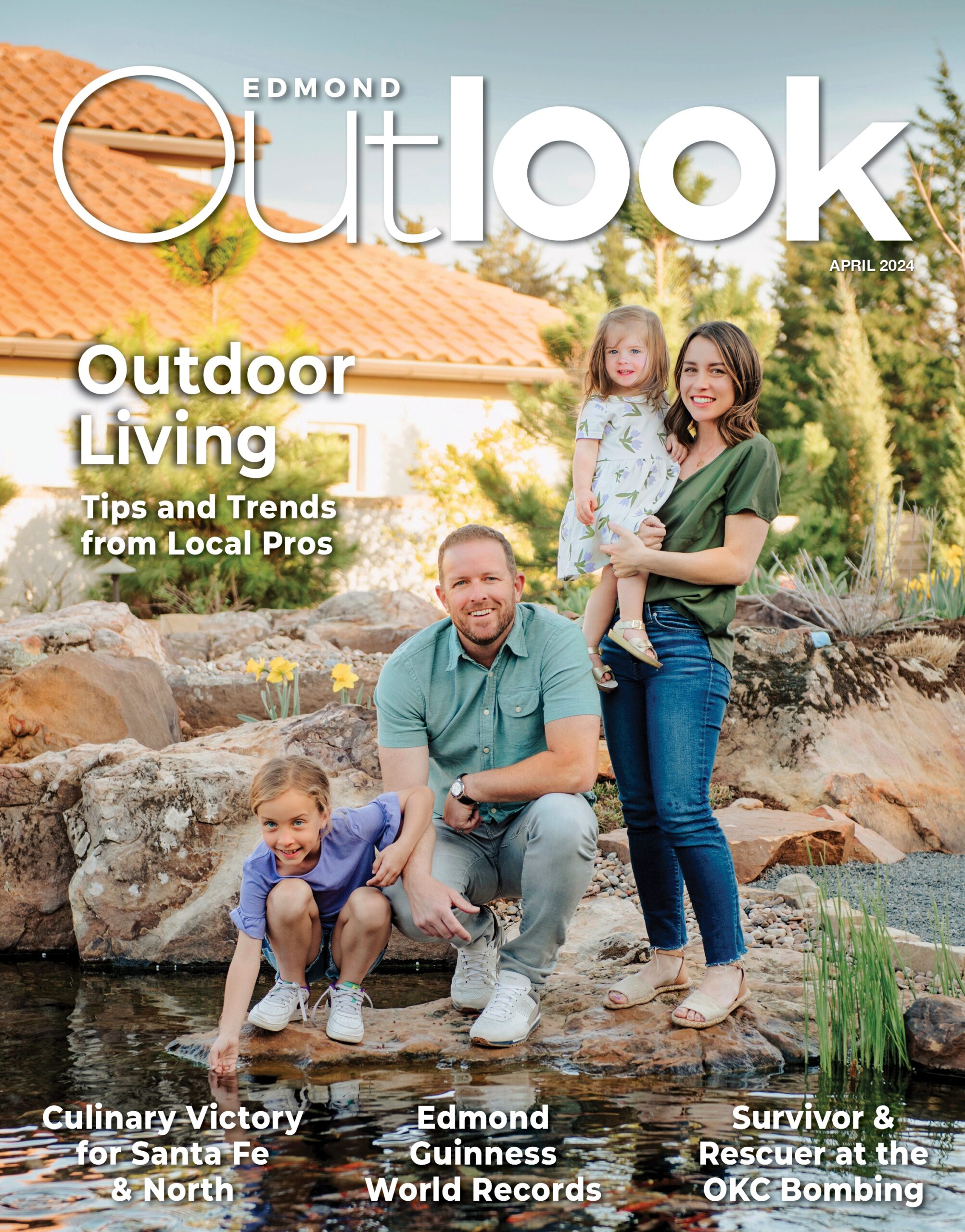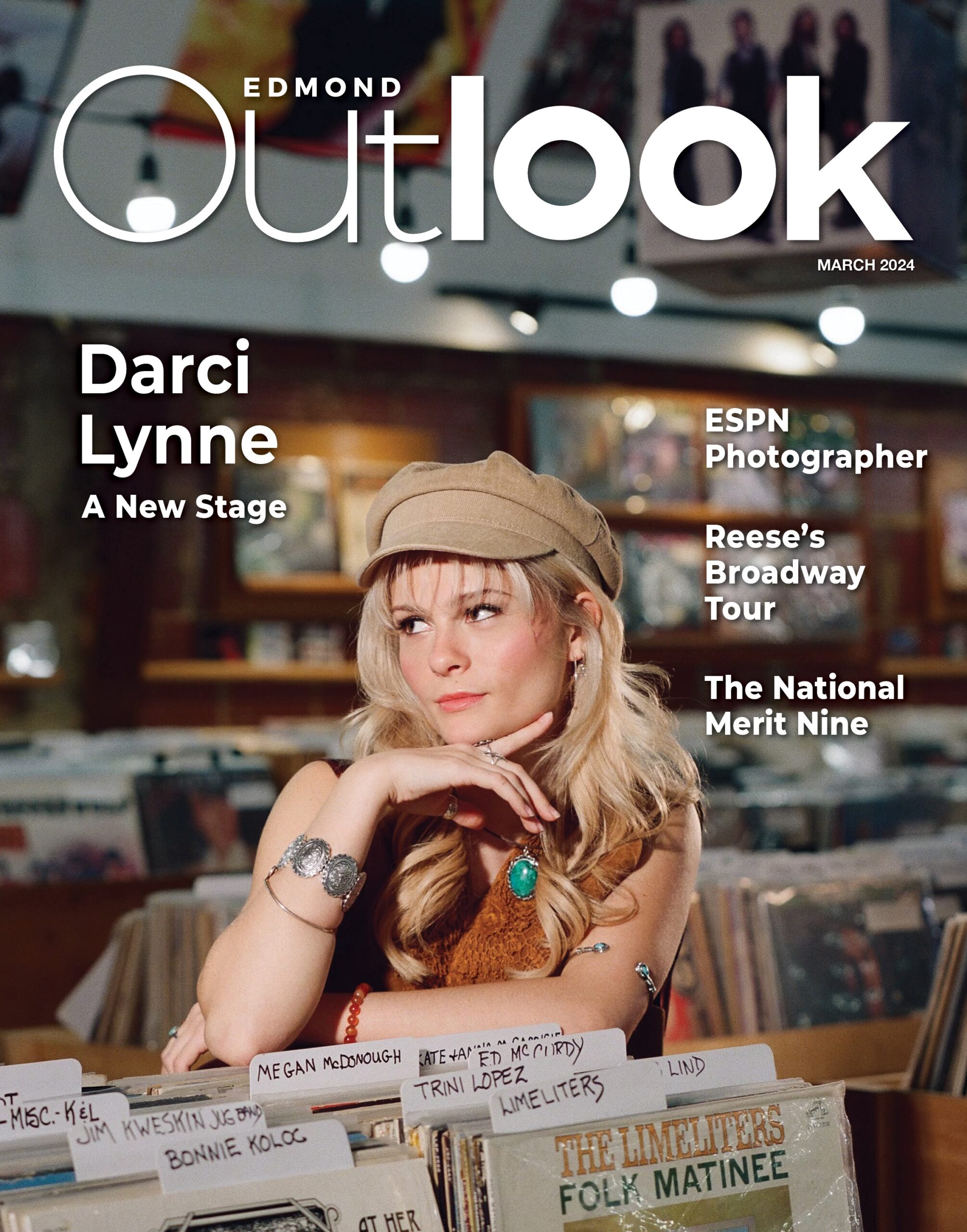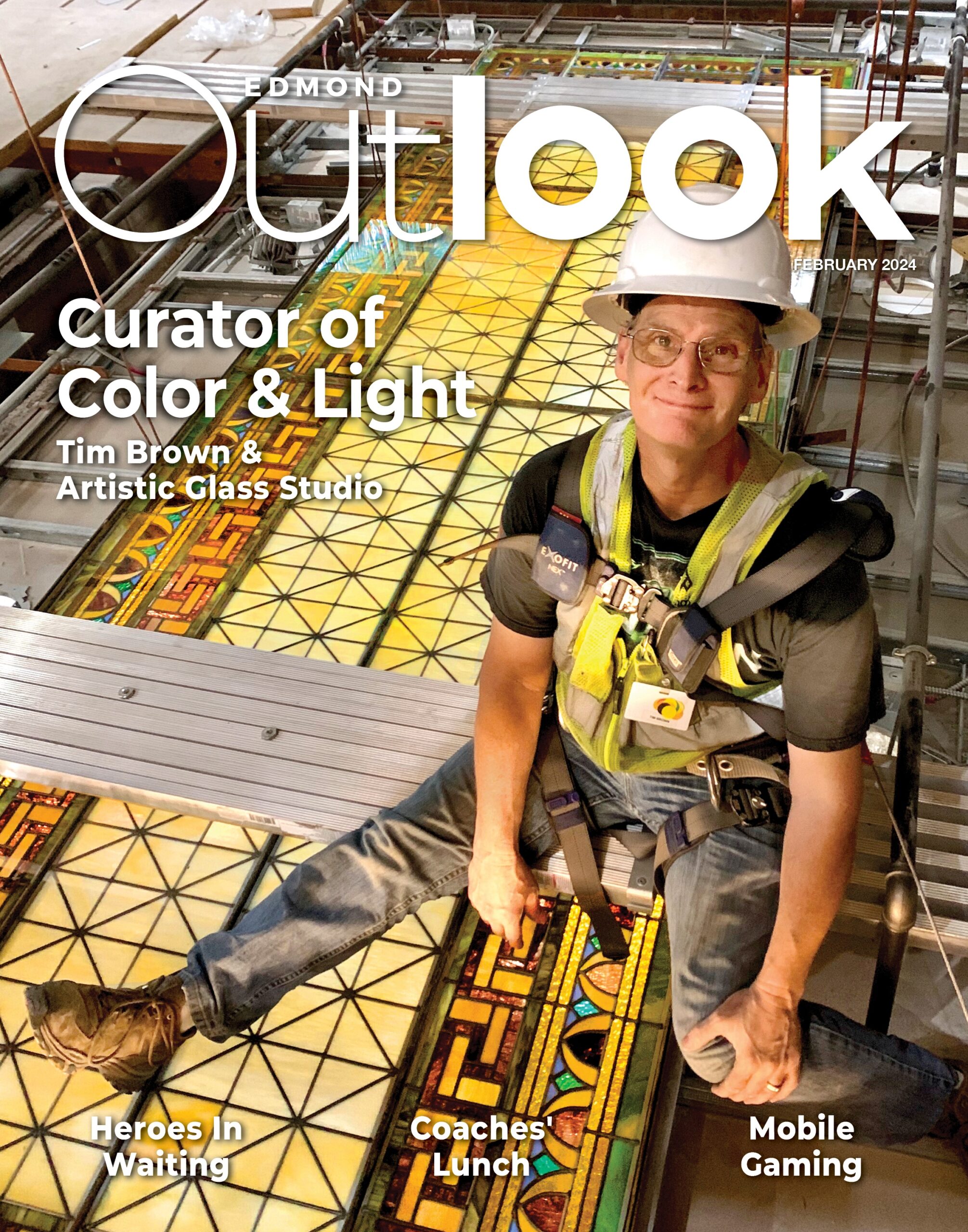H&G: Walking the Walk
These days, the trend is “green”. Not the minty hue of dollar bills, more along the lines of your carbon footprint shade of green. With increasing attention being focused on energy conservation, experts say it is more important than ever to think about our personal impact on the earth.
One Edmond businessman has taken energy conservation a step further by designing a home that serves not only as a highly functional living space, but as a model example for everyone who visits, that green living is not only possible, green is great.
Paul Conrady has owned Edmond Security Inc. for the past 30 years. “I recently made some changes in my office that gave me the opportunity to build a house that I’ve wanted to build for 20 years,”
he says.
His desire to become a pioneer and build a home with groundbreaking green design began to take shape when Conrady learned of ICF construction – Insulated Concrete Form. This particular element consists of foam blocks with concrete poured inside, essentially giving a home a 13-inch wall, according to Conrady. Benefits of ICF include keeping indoor temperatures more constant and the air cleaner.
The walls were only the beginning. Conrady then formulated a plan to include green design tactics for everything from the flooring and windows, to the materials used within the home.
Though the house serves as an superb living space for Conrady and his family, “I built it as a model home and classroom to teach other people how to build green,” he says.
In preparation to put his plan into action, Conrady and his wife attended green festivals all over the country for three years prior to the construction of their home.“I had a pretty good idea of what I wanted to do. Going to the green festivals was just to confirm I was on the right track,” he said.
Some of the things he saw and incorporated in his home include a geothermal system that provides heating and cooling with extreme efficiency.
The temperature consistency definitely paid off over the summer for Conrady, who is often out working in his garage. “I keep my house at 74 degrees and my garage never got over 80, which is huge because that’s where I spend most of my time. That’s where I tinker,” he says.
To achieve his temperature success, he utilized a high level of insulation with windows designed with hurricane glass. After 30 years of providing expertise on local security needs, of course, one reason for this impact resistant glass is for security, but the decision ran much deeper.
When storms hit, a house will likely lose its roof if it looses the pressurization inside. Pressurization is aided by having the glass intact, according to Conrady. “If you can keep your glass in place as long as possible, you’re more likely to keep your roof,” he says.
The casement windows also aid in the airflow of the house, which allows Mother Nature’s cooling system to be not only pleasant, but free. “This morning, I opened up particular windows because of which way the wind was blowing and immediately exchanged the air inside the house and it was just awesome,” he chuckled.
Conrady served as contractor on his home and lived out on the property, located in Luther, for two years while the work was being coordinated. An important aspect of the home is its ability to be easily accessible for his daughter, who is in a motorized wheelchair.
“She had her own house and she didn’t really want to move home with Mom and Dad, so we created this totally independent apartment that she helped design,” he says. This space is located in the basement level of the home and includes an elevator and open floor plan.
Conrady’s devotion to green features is apparent in the lack of dyes and formaldehydes in the interior. The floors are all stamped concrete and wood. There are many recycled or local components to the home, such as native stone from Conrady’s brother’s rock quarry.
All of these additions are efforts which aid Conrady’s goal of having his home LEED certified. LEED, as developed by the United States Green Building Council, is Leadership in Energy and Environmental Design.
As well as helping Conrady to become LEED certified, these green features are standing their true test – energy efficiency. A key motivation in building green was to save his family an exponential amount in utility costs over time.
“The cost of power is going to continue to escalate,” says Conrady. “What drove me to do this was to protect my assets to go forward so that I don’t have outrageous utility bills.”
Ultimately, Conrady hopes to move his house entirely to solar power and drive his utility cost to zero. He anticipates this to happen within the next year or two. “My whole goal is to get to zero energy,” he says.
For more information on making your home a little more green, visit their website at www.greenhomeguide.com, the U.S. Green Building Council’s Home Guide with interactive Ask A Pro features and educational blogs.


